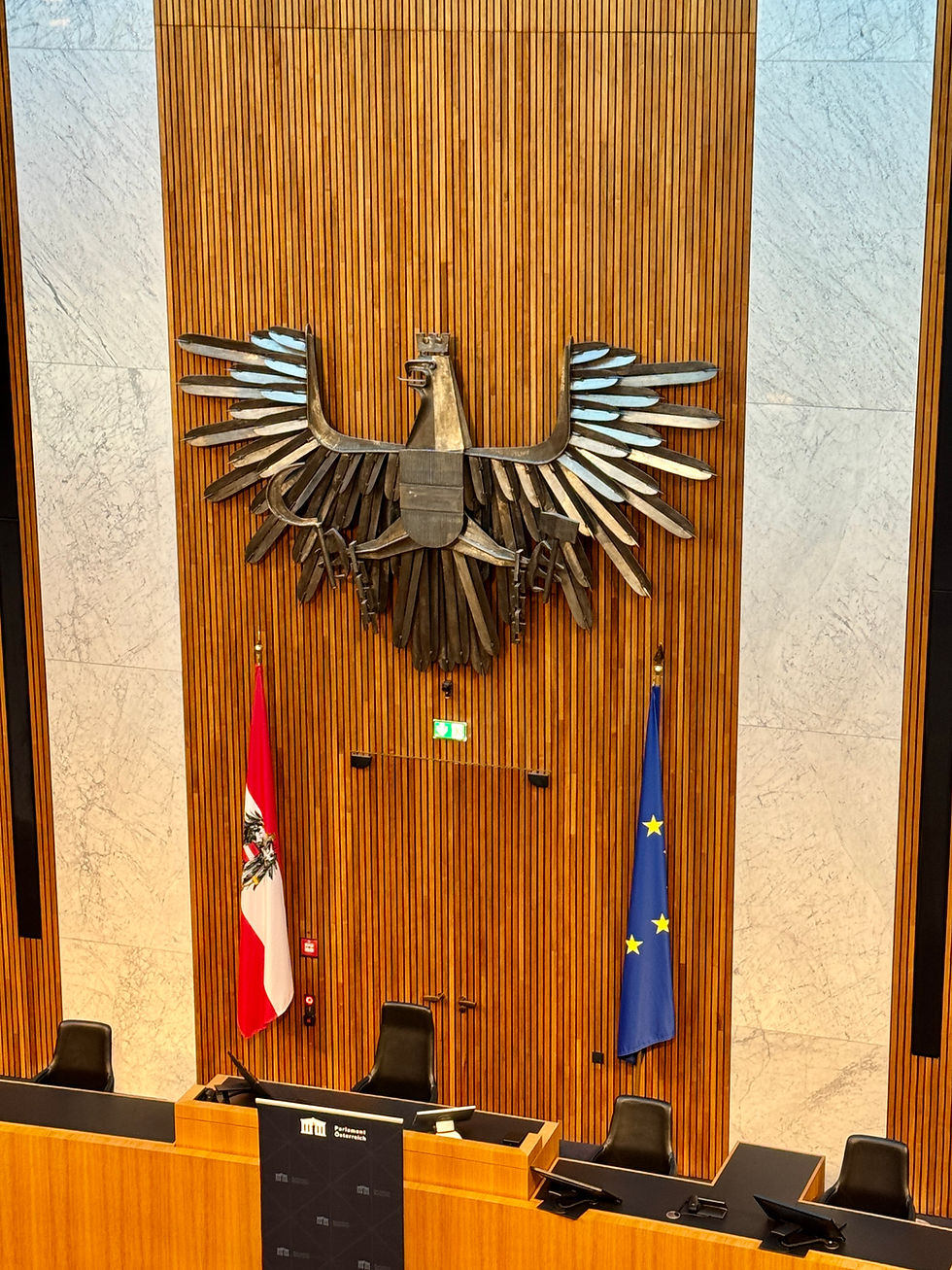Prunksaal - The Most Beautiful Library in the World
- Mika Vepsalainen
- Nov 2, 2024
- 2 min read
We do not know if Sisi was much of a reading princess but she definitely had one of the most beautiful libraries next door.

The library hall is one of the most beautiful in the world and the State Hall, Prunksaal is the central structure of the imperial library in the Hofburg palace. The Prunksaal was built in the 18th century as part of the Court Library and it truly comes as a surprise with its length of almost eighty metres and a height of twenty metres. The grand imperial flair is further emphasized by an elaborately decorated dome and numerous frescoes. Four magnificent Venetian globes with a diameter of over one metre complete the heart of the Austrian National Library. Architect Johann von Erlach started work on the library wing in 1721 and his son Johann Bernhard completed ikt in 1723 after the father's death.
The main hall is divided in to “war” and “peace” sides after the original list of the books, which is reflected also in the wall frescoes. The central dome one is actually an apotheosis - “becoming a god” - of Emperor Charles VI, whose image is held by Hercules and Apollo. The allegorical figures around symbolize the virtues of the Habsburgs (erh, like, hmm…) and the wealth of their domains.
The library is actuallz the largest Baroque library in Europe with over 200,000 historic books from 1501 to 1850 including the 15,000-volume collection of Prince Eugene of Savoy, bound in red, blue, and yellow Morocco leather, as well as one of the biggest collections of Reformation writings by Martin Luther. The library also stores the books from the monastery of the Conventual Franciscans (Minoritenkloster). Unfortunately, you cannot read any of these here as they are far too fragile for your fingers.
The historical heritage of the Austrian National Library is not free of injustice and guilt. That is particularyly true for the Nazi period ledby a fanatical National Socialist, Paul Heigl. Under his rule, the National Library was an active participant on a grand scale in the systematic robbing of Jewish citizens, and also of other victims of the Nazi regime. Despite considerable restitutions in the post-war years major portions of the looted collections remained in the Library. So the earliest possible restitution of those holdings to their legitimate possessors became a moral question that was, at least partially, solved with the Federal Law on Restitution of Art Objects from 1998. It was as late as in 2003 that the Commission for Provenance received the report of the Austrian National Library. Since then, over 33,000 objects have been restored to their lawful owners.
The Great Hall is wheelchair accessible although in a bit complicated way. Next to the left side gate on Josefsplatz there is a blue bell for wheelchair users. Press it if you need help to get over the small step when entering. An employee from the museum security will come to help.
There is an accessible toilet but no gift shop nor café but as you couldn’t be more centrally located in Vienna, feel free to take ein G'spritzter or eine Mélange in any of the hundreds of cafés around.
Prunksaal
Josefsplatz 1, 1010 Wien
























Comments